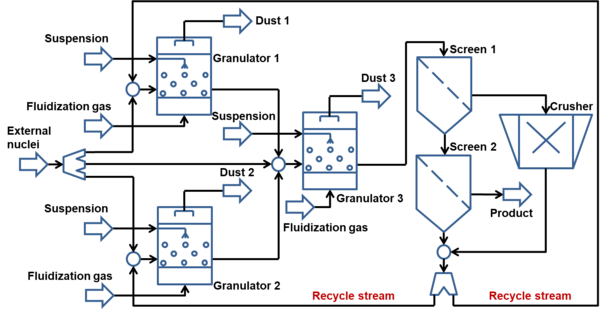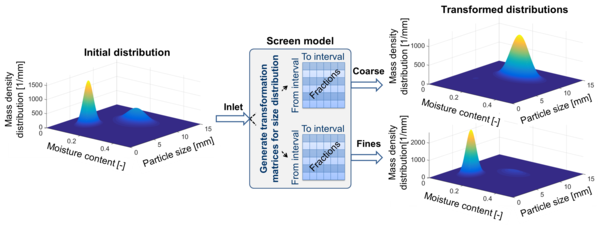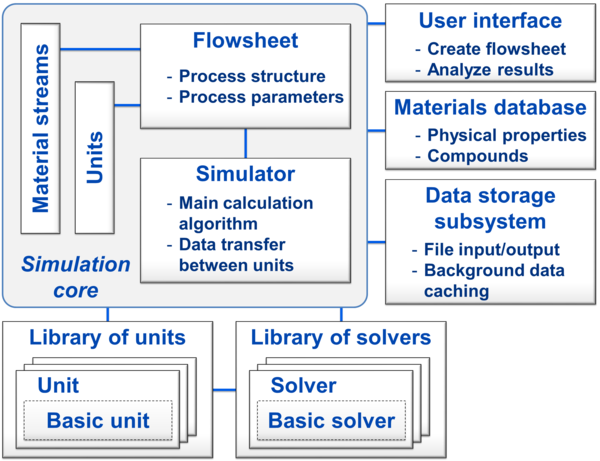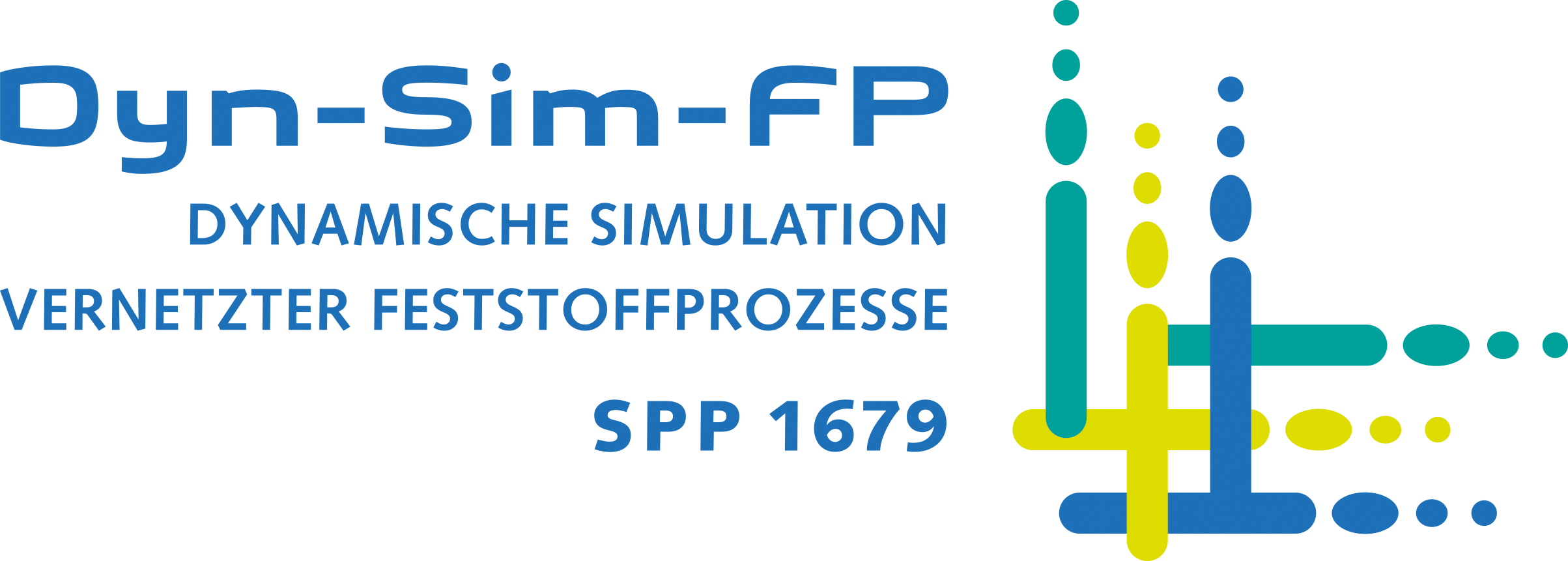Dyssol – Dynamic simulation of solids processes
The novel dynamic flowsheet modelling system Dyssol is designed to simulate the time-dependent behaviour of complex production processes in solids processing technology. Its key features are:
Dynamic simulation of flowsheets to reflect the time-dependent behaviour of processes and to take into account the accumulation of mass and energy,
Proper calculation of multidimensional distributed parameters of the solid phase, considering their possible interdependence,
Flexibility and extensibility of the system for adding new models of apparatuses and solvers.
Approaches and methods
The new system is based on the sequential-modular approach, where each model is calculated separately. This allows the simultaneous use of multiple specialized solvers for the calculation of a flowsheet and simplifies extension the unit library with new models. To increase the computational efficiency, dynamic calculations of flowsheets with recycle streams are based on the waveform relaxation method: the total simulation time is divided into smaller intervals, and models are solved separately on them, using some initial guess for the solution.

Flowsheet simulation of solids
One of the main challenges in simulation of solids processes is associated with the dispersity of granular materials: the solid phase can be distributed along several interdependent parameters, such as size, shape, moisture content or density. For correct handling of solids in this case an approach with transformation matrices is used (Fig. 2). This concept allows preserving information about all parameters, even those which are not considered or not changed in a particular apparatus.

Architecture of the system
To implement the Dyssol system, the C++ programming language and the object oriented paradigm are used (Fig. 3). To maximize the modularity of the simulation environment, models of units are not directly integrated into the framework, but may be implemented as separate objects and then added to the library of units.

Distinctive features of Dyssol
- Dynamic simulation of complex process structures,
- Advanced calculation algorithm for dynamic simulations,
- Consideration of solid, liquid, gas phases and their mixtures,
- Proper handling of multidimensional interdependent distributed parameters of solids,
- Providing standardized interfaces and templates for implementation of new units,
- High modularity and extensibility.
Selected publications
Skorych, V., Dosta, M., Hartge, E.-U., Heinrich, S.: Novel system for dynamic flowsheet simulation of solids processes. Powder Technology 314 (2017), 665–679.
Skorych, V., Dosta, M., Hartge, E.-U., Heinrich, S., Ahrens, R., Le Borne, S.: Investigation of an FFT-based solver applied to dynamic flowsheet simulation of agglomeration processes. Advanced Powder Technology 30 (2019), 555-564.
Funding
German Research Foundation (DFG) via SPP 1679 “Dyn-Sim-FP”.


